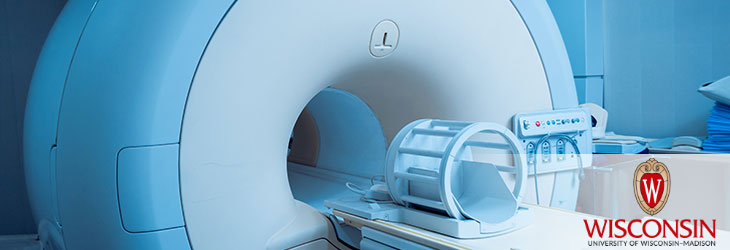Radiation Therapy

Automated Radiation Treatment Planning to Improve Consistency
WARF: P140327US01
Inventors: Edward Bender, Jacob Hoberg
The Wisconsin Alumni Research Foundation (WARF) is seeking commercial partners interested in developing a method for generating radiation treatment plans based on patient data and the physical capabilities of the system.
Overview
Radiation treatment plans are crafted on a case-by-case basis to target a patient’s tumor and spare healthy tissue. Plans are based on a radiation dose prescribed by a physician and computed using special software.
Surprisingly, there exists no standardized methodology for how to consistently achieve high quality treatment plans. In current clinical practice, a trial and error process is used, and meeting all objectives is difficult. Given the technical challenge of developing a good treatment plan in a clinical setting, neither the physician, dosimetrist nor medical physicist may be aware of the best achievable plan for a patient.
Therefore, the quality of today’s radiation treatment plans is a reflection both of the technology being used and the quality of the planning objectives. A superior method should be able to deliver consistently good plans across different patients and equipment systems.
Surprisingly, there exists no standardized methodology for how to consistently achieve high quality treatment plans. In current clinical practice, a trial and error process is used, and meeting all objectives is difficult. Given the technical challenge of developing a good treatment plan in a clinical setting, neither the physician, dosimetrist nor medical physicist may be aware of the best achievable plan for a patient.
Therefore, the quality of today’s radiation treatment plans is a reflection both of the technology being used and the quality of the planning objectives. A superior method should be able to deliver consistently good plans across different patients and equipment systems.
The Invention
UW–Madison researchers have developed a method for generating high quality radiation treatment plans for every patient. In the new method, planning objectives are automatically determined based on patient data, e.g., target regions and organs at risk (OARs). So-called ‘physical objectives’ take into account the physical constraints and capabilities of the particular therapy system being used.
This approach is contrary to traditional planning schemes based on dose-volume histograms, which fail to convey the same spatial information attainable with the new method.
This approach is contrary to traditional planning schemes based on dose-volume histograms, which fail to convey the same spatial information attainable with the new method.
Applications
- Treatment planning software for radiation therapy
Key Benefits
- Consistent, high quality treatment plans
- Limited user intervention
- Saves time (planning takes less than three hours)
Stage of Development
The researchers have optimized programs for the following treatment indications: prostate, lung SBRT (stereotactic body radiotherapy), brain and standard lung (big tumors).
Tech Fields
For current licensing status, please contact Jeanine Burmania at [javascript protected email address] or 608-960-9846